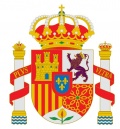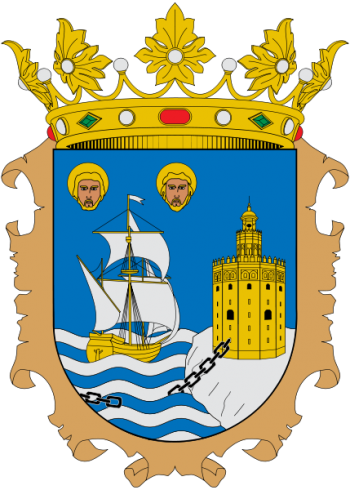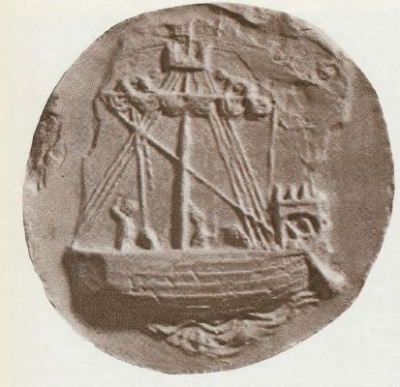Santander: Difference between revisions
Knorrepoes (talk | contribs) m (Text replacement - "/Arms of " to "/Arms (crest) of ") |
Knorrepoes (talk | contribs) m (Text replacement - "|'''English''' ↵| {{blazon wanted}}" to "|'''English''' | blazon wanted") |
||
| Line 14: | Line 14: | ||
|- | |- | ||
|'''English''' | |'''English''' | ||
| | | blazon wanted | ||
|} | |} | ||
Revision as of 10:56, 7 April 2023
Spanish heraldry portal
This page is part of the Spanish heraldry portal |
Heraldry of the World |
|
Civic heraldry:
|
Other heraldry: |
SANTANDER
Region : Comunidad Autónoma de Cantabria (until 1982 Province of Santander)
| Spanish | En campo de azur sobre ondas de azur y plata, un galeón haciendose a la mar, visto de popa de oro, habillado de plata y surmontado de dos cabezas de santo en su color puestas en faja y siniestrado de una roca, de plata, moviente del flanco siniestro, sumado de una torre dodecaedra, donjonada, de oro, de la que pende en su base una cadena rota de sable que cae al rio. |
| English | blazon wanted |
Origin/meaning
The arms were officially granted on ?
The tower is the Torre del Oro (Golden Tower) of Seville, and the broken chains and galleon refer to the very important participation of the Santanderns ships in an ancient battle in the 13th century, where a great army of Castille went upstream the Guadalquivir river, and broke the muslims resistance to reconquest Seville. The muslims put large chains across the river to avoid the Castillian vessels to pass, but the chains were broken and the Santander ships where the first to pass.
The two heads are from two saints, St. Emeterio and St. Celedonio, the patron saints of the city. Their heads were cut off hence only the heads are commonly shown.
| The oldest seal from the 13th century (Ewe, 1972) |
Literature : Image from Wikipedia



